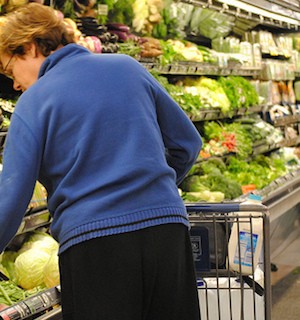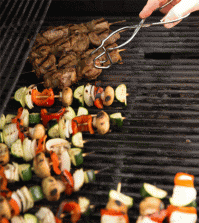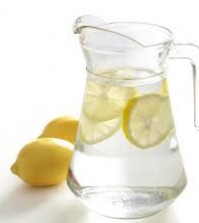- Finding Unshakable Power in a World That Wants to Pull Us ApartPosted 5 months ago
- What could a Donald Trump presidency mean for abortion rights?Posted 5 months ago
- Financial Empowerment: The Game-Changer for Women in Relationships and BeyondPosted 7 months ago
- Mental Health and Wellbeing Tips During and After PregnancyPosted 7 months ago
- Fall Renewal: Step outside your Comfort Zone & Experience Vibrant ChangePosted 7 months ago
- Women Entrepreneurs Need Support SystemsPosted 7 months ago
FOOD PRICES ON THE RISE: 4 TIPS TO SAVE & EAT HEALTHY

It looks like consumers will be coming up against some major sticker shock at their local grocer. Economic projections show that retail food prices could rise as much as 3.5 percent in 2014—the biggest annual spike in almost three years. According to a recent Arizona State University (ASU) study, the biggest hit will be to the produce aisle where many of us get our inspiration to eat healthy.
The study found that produce staples, including lettuce, avocados, broccoli, tomatoes, and peppers, are all expected to jump in cost over the next few months, in some cases significantly. A head of lettuce could increase as much as 34 percent, from 62 cents to $2.44, while avocados could rise .35 cents to cost healthy shoppers $1.60 each. Overall, fruit and veggie prices have increased nearly 2 percent since February.
The price tag on produce is not the only to see gains. A steady increase in animal proteins may motivate some carnivores to limit the BBQ’ing this summer.
Read more about reducing your food waste
Over the last year, meat prices have risen more than 5 percent with the cost of beef and pork expected to top out at a 7 percent increase by end of 2014. Meanwhile, dairy has jumped 2.4 percent in price and the cost of eggs—thanks to an avian flu outbreak—is up almost 10 percent.
Enough with the depressing numbers: why are our food bills doubling?
The hit to our wallets is largely the work of Mother Nature, from droughts to disease to supply. Much of the fanfare points to California, the source of roughly half of the nation’s produce, where a serious drought is leaving farmers with little choice but to cut food production. This, met by a five-year drought in the Midwest, has affected costs of meat as it becomes costlier to feedlivestock. A deadly virus that wiped out more than 6 million piglets in 2013 only intensified the pressure, leading to a jolt in pork prices.
We can expect the food sticker shock to linger, if not grow, according to the United States Department of Agriculture (USDA), who reports “large and lasting effects on fruit, vegetable, dairy and egg prices.”
With this in perspective, there are always ways to beat the system to save some money and still eat healthy. Here are some tips to lower your grocery bill without lowering your family’s appetite.
Tip #1: Cut and chop it up yourself. Buying precut meats, fruits and vegetables drives the costup roughly 60 percent. Buy them whole and take the time to cut them up yourself, then freeze or store in air-tight containers.
Tip #2: Cut out the middleman. Grocery stores pass their food costs on to the consumer, and then pad it for profit. Buy your meats, dairy and produce directly from local farmers by visiting your neighborhood farmers’ market or signing up to receive a box of fresh food delivered to your door each month via a local Community-Supported Agriculture (CSA). This can save you a surprising amount of money (and it’s like Christmas when that box shows up on your doorstep!)
Tip #3: Grow your own. Have you secretly wanted to start your own garden but keep delaying? Well, no better time than the present. Start small (and simple!) by growing fresh herbs, and then expand your garden as you experiment with your green thumb. If you lack yard space but have access to plenty of light, consider indoor container gardening. (Check out Pinterest for inspiration.) Avocados, carrots, salad greens, lemons, mushrooms, tomatoes, and oranges are just a handful of the healthy, edibles that thrive indoors. Having fresh herbs and produce around you will only inspire you to eat healthy when cheap processed foods are calling your name.
Read more about freezing summer fruits and vegetables
Tip #4: Buy frozen. While we think fresh is always best, frozen produce may be gaining more of the spotlight as cost increases. For one, most frozen foods are cheaper than their fresh counterparts and they have a longer shelflife. But could frozen be more nutritious, too? “The second produce is harvested, it begins to lose nutrients,” says Cynthia Sass, MPH, RD. “Since frozen produce is typically iced close to the time it’s picked, and freezing preserves and possibly boosts antioxidants and nutrients, freezing essentially “locks in” good nutrition.” Additionally, freezing inherently preserves food so preservatives aren’t needed in pre-packaged frozen fruits and veggies. It’s a win-win.
From our partners at Naturally Savvy






